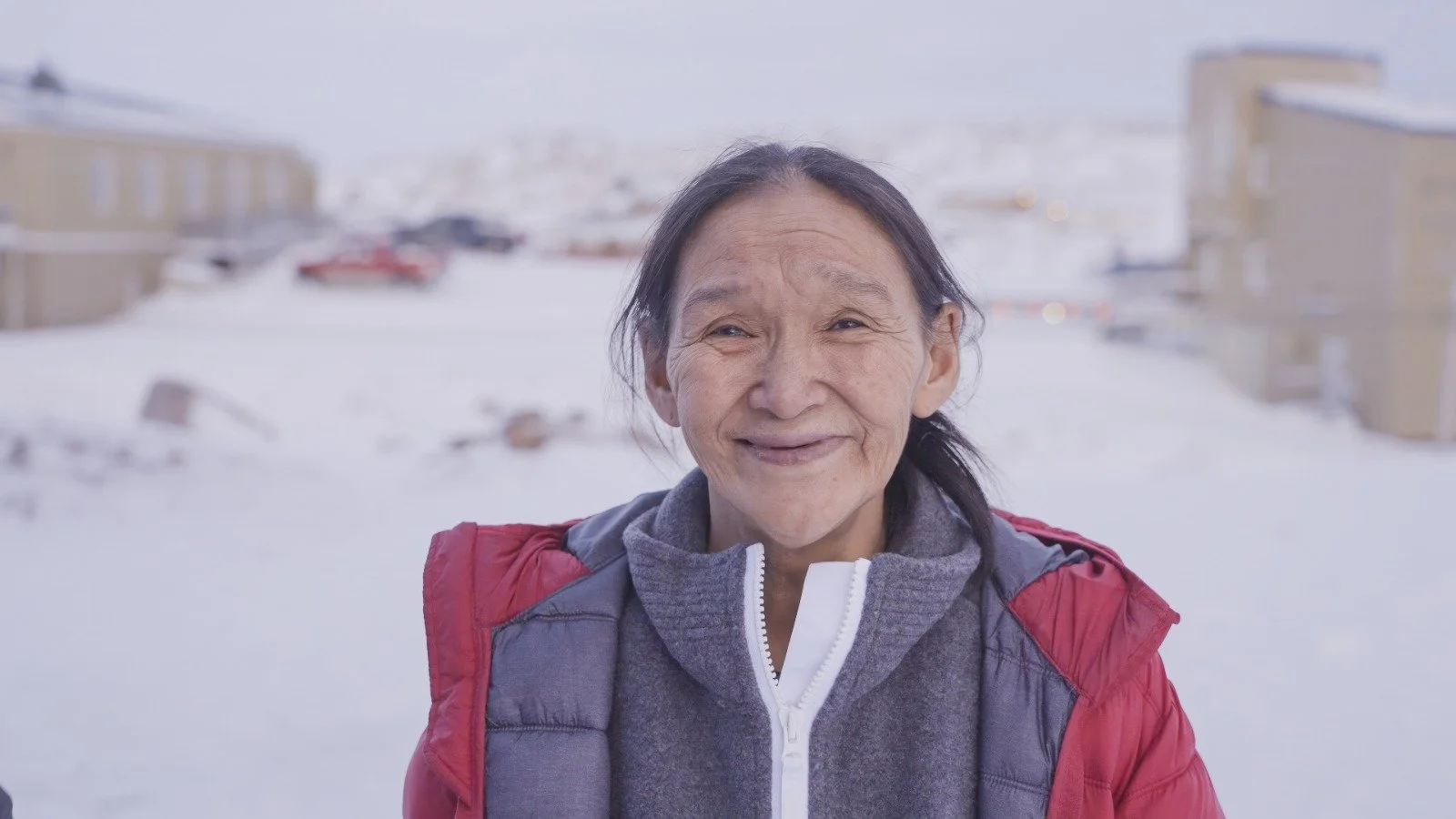Gwangju Biennial: Home and Other Places
Interior view of one of the gallery spaces, 2024. Photo: Sae-woong Ju.
Qavavau Manumie, Canada Pavilion in Gwangju’s Yangnim Art Centre, Gwangju Biennale. COURTESY OF KOFICE
A universal visual language: Inuit art at the 2024 Gwangju Biennale: Home and Other Places
Home and Other Places opened at the Gwangju Biennale in September, bringing Inuit art to Korea for the fifth time in two years. As a relatively new space to share Inuit art, the Biennale’s presentation of Inuit art as contemporary art rather than Indigenous-specific provides a different context to how it is received.
There is great demand internationally for Inuit artists to travel, but there are translational nuances of language that can be lost. Visual art can cross barriers.
“Art is a universal language,” William Huffman, of the West Baffin Eskimo Cooperative, said in an interview with Studio. “In the print shop, it’s like they (the artists) are at home.”
Six Inuit artists are represented in Home and Other Places, following a cross-cultural exchange that saw Korean artists visit Kinngait earlier this year. Huffman curated the Inuit pavilion alongside Sun Lee, director of the Lee Kang-Ha Art Museum in Gwangju. Together, they commissioned works based on the cultural exchange, which they displayed alongside prints from the Cape Dorset Print collection. The facade of the Canadian pavilion was clad in blue metal to mirror the Kinngait artist cooperative building.
The ideas for the exhibition at the Gwangju Biennale were centred around cultural exchange, and how to bring Kinngait to Gwangju. In the words of Huffman: “How do you manifest an experience? You create it for the audience.”
The cultural exchange brought together artistic communities from two places in the world that are very far apart geographically, yet William Huffman recounts how delighted the artists were about sharing the special aspects of where they called home, from food to language, landscape, climate and speculation on the ancient Asia-Arctic migration.
The six Kinngait artists included in the pavilion were Saimaiyu Akesuk, Shuvinai Ashoona, Qavavau Manumie, Quvianaqtuk Pudlat, Pitseolak Qimirpik and Ooloosie Saila. Commissioned to make works that envisioned the gallery space as a home in the North, the new experience encouraged the artists to play with scale in black and white for the exhibition, and each artist brought their own visual language to the project.
Shuvinai Ashoona, Home and Other Places [Group gathered around a broken sled], 2024. Mural. Photo: Sae-woong Ju.
From Pitseolak Qimirpik’s landscape and animals to Saimaiyu Akesuk’s larger-than-life stylized tools and Shuvinai Ashoona’s representation of a group gathered around a broken sled, the visual language of the murals transforms the gallery into scenes of Inuit home and landscape with universal themes. Scenes from everyday Inuit life, from fisherman to fashionable youth by Ooloosie Saila, along with vast landscapes and animals, the black lines on the white of the gallery walls create an immersive dreamlike space that transports the viewer to the North.
A bench designed specifically for the space resembles a qamutiik — a traditional Inuit sled — that functions to produce engagement with not only the art but also the lifestyle of the North. Huffman refers to this as a “pushing and pulling out of reality.”
The exhibition is about dismantling perceptions through establishing threads of commonality. The space of the pavilion itself references the original artists’ studios in Kinngait; these nuances are not integral to understanding the exhibition, but are familiar to those in the know.
During the last week of the Biennale, visitors will be invited to colour in the murals, inviting a crowdsourced collaborative vivification and a personal collective touch to the mural walls.
Seol-a Kim, Migrating body Domiciliating Soul, 2024. Oil and clay. Photo: Sae-woong Ju.
The works of the Korean artists in the exhibition reflect their time in the North: Sae-woong Ju, Jo-heum Lee and Seol-a Kim created works as a response to their travels to the Arctic. Seol-a Kim’s sealskin mounds speak directly to the landscape and wildlife of Kinngait, with the hill forms recalling fantastical creatures. Sae-woong Ju’s dance performance — alongside drum dancing by silversmith Mathew Nuqingaq on loop in the gallery — is a direct expression of the two cultures meeting through music and movement. The video is in immediate conversation with the other works in the exhibition.
The transformative meaning of “home” is a crucial expression of how powerful art can be. New meanings are created by the power of storytelling, and this exhibition works to tap into the universal language of art. As Huffman points out, art is a potent communicative force: “It’s not an accident that Kenojuak Ashevak was such a great ambassador of Inuit art. It was the power of storytelling.”









